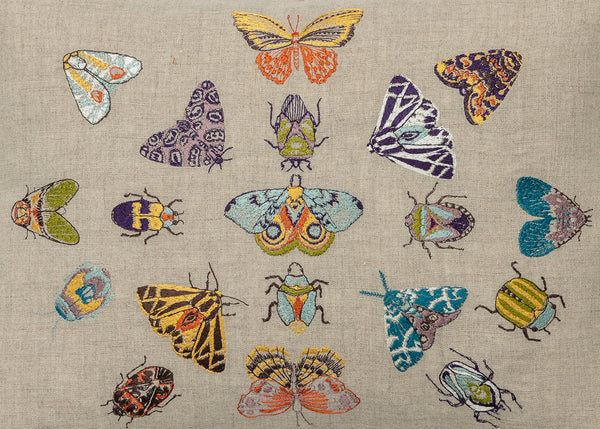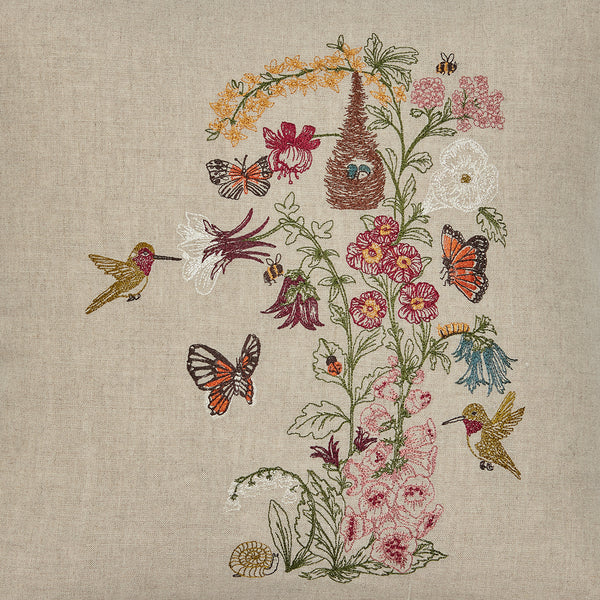So what can we do to not only help pollinators survive but thrive? Today we are sharing four personal actions you can take this spring to protect pollinators. If you have an outdoor space that is great and there is so much you can do with your yard or garden to make it a pollinator friendly space. Even if you live in the city and only have a window sill, there are still things you can do everyday that can help these hard working insects that are essential for healthy ecosystems and agriculture.

Create a Pollinator Friendly Garden
Even with just a small patch of outdoor space you can create a pollinator friendly environment for your neighborhood bees and butterflies! Aubrey Skye, a Hunkpapa Lakota gardener was profiled last year in Yes! Magazine’s article, “Gardening Advice from Indigenous Food Growers.”
Sky suggests adding colorful flowers native to your area within your garden and window boxes. “They attract bees, butterflies, hummingbirds, and other pollinators,” says Skye, adding that pollinators are an integral part of a plant’s life cycle. “Without them, the harvest wouldn’t happen, and we would be looking at extreme food shortages, not just occasional gaps. By giving pollinators flowers they like, we support them, just as they support us.”
To find out which plants are best for pollinators in your area check out Pollinator.org’s Planting Guide. You can enter in your zipcode to find a guide to pollinators and plants in your area.

Go Chemical-Free
Once you’ve selected the pollinator-friendly plants and flowers for your garden you’ll want to be sure to avoid harsh chemicals. The Bee Conservancy notes “Synthetic pesticides, fertilizers, herbicides, and neonicotinoids are harmful to bees, wreaking havoc on their sensitive systems. Avoid treating your garden and green spaces with synthetics.” The Conservancy instead advocated for natural solutions including compost for soil health and introducing ladybugs and praying mantises instead of relying on pesticides.
While shopping for plants consider supporting your local nursery. We learned via the National Resource Defense Council (NRDC) that A 2014 report by the nonprofit group Friends of the Earth and other organizations found that 51% of plant samples purchased at top garden stores in the US and Canada contained neonicotinoids. Neonicotinoids are now the most widely used insecticides in the world and are toxic to pollinators. To avoid these chemicals find smaller nurseries in your area that focus on organic gardening. The NRDC also reminds us, “The more you ask for pollinator-safe plants, the more likely stores will start stocking them.”

End Food Waste
The USDA reports that “Three-fourths of the world’s flowering plants and about 35 percent of the world’s food crops depend on animal pollinators to reproduce.” With bees, butterflies, birds, bats and other animals working hard to pollinate plants that we eat, let’s respect their work by not wasting our food. The USDA estimates that food waste is 30% - 40% of the food supply in the United States.
Save the Food is a helpful resource to avoid food waste in our own homes. Look up how to best store fruits and vegetables to extend their shelf life or get inspired with recipes that help you best use that over-ripe avocado.
Support Legislation
The Xerces Society for Invertebrate Conservation is an international nonprofit organization that protects the natural world through the conservation of invertebrates and their habitats. On their site we learned about The Monarch Act of 2021 introduced by Senator Jeff Merkley of Oregon and Representatives Jimmy Panetta and Salud Carbajal of California. The Monarch Act will provide funding for conservation activities to restore, enhance, and manage overwintering and breeding habitats of monarch populations in the western U.S.
Head to The Xerces Society website to send an email to your representatives supporting this act and read more about the Monarch Emergency.
You can also send a letter to the new EPA chief, Michael Regan, urging him to ban bee-killing uses of neonics and save the future of our food supply on the NRDC website. The EPA will complete its current hazard review of neonic pesticides in a little under a year, after that they will not be required to review these bee-toxic chemicals for another fifteen years. Learn more about the hazards of neonic pesticides.



















